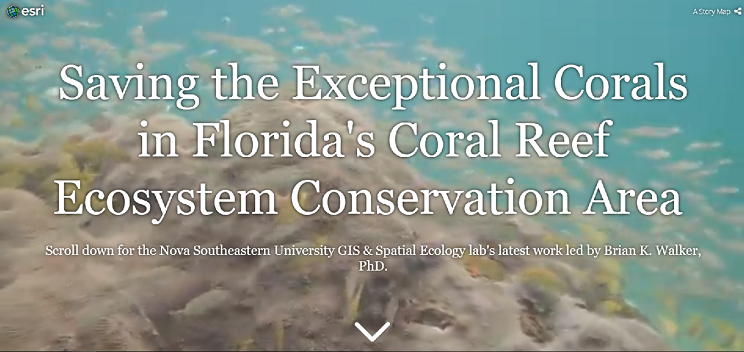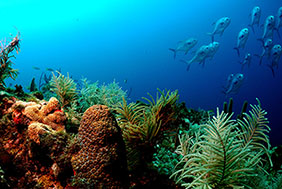-
Home
-
Data & Publications
-
Regional Portals
- About Regional Portals
- Florida
- Navassa Island
- Puerto Rico
- Flower Garden Banks
- U.S. Virgin Islands
- American Samoa
- Commonwealth of the Northern Mariana Islands
- Federated States of Micronesia
- Guam
- Main Hawaiian Islands
- Republic of the Marshall Islands
- Northwestern Hawaiian Islands
- Republic of Palau
- Pacific Remote Island Areas
-
CRCP Activities
- Glossary
Saving the Exceptional Corals in Florida's Coral Reef Ecosystem Conservation Area

Florida's Coral Reef stretches approximately 360 linear miles from St. Lucie Inlet in Martin County past Key West to the Dry Tortugas, including Biscayne National Park, the Florida Keys National Marine Sanctuary, and the Southeast Florida Coral Reef Ecosystem Conservation Area.
In March 2018, the Coral Ecosystem Conservation Area was established to protect and manage the offshore reef habitats within the area.
Since 2013, Nova Southeastern University's GIS and Spatial Ecology laboratory has been working to document the location of large corals throughout Florida's Coral Reef. These corals, most of which are listed as threatened on the endangered species list, are up to 300 years old and have been hit hard by stony coral tissue loss disease. The lab has been funded by state and federal partners to keep these ecologically important corals alive through the latest disease intervention techniques.
Learn more about the GIS and Spatial Ecology lab in the following story map: Saving the Exceptional Corals in Florida's Coral Reef Ecosystem Conservation Area.


